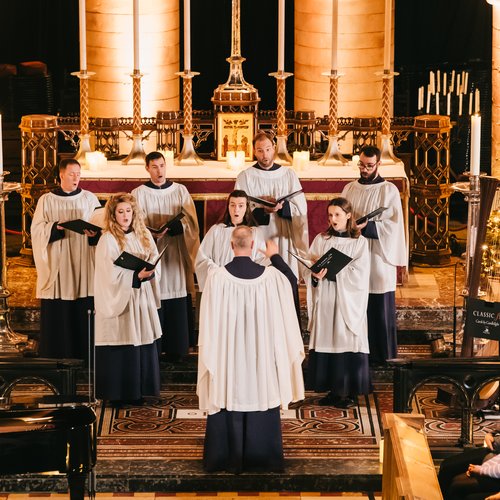On tonight's Full Works Concert: Holst's Cotswolds Symphony
Holst’s first major orchestral work is a superb joyful piece with hints of greatness to come, writes Anne-Marie Minhall. Hear it tonight on the Full Works Concert.
Already in his 20s, Gustav Holst was beginning to demonstrate a command of the orchestra which was to remain a hallmark of his music for the rest of his career. His first major orchestral piece - the Symphony in F - put all the instruments to work to conjure up a musical tribute to the countryside near his home that had so inspired him whilst growing up.
After leaving high school in Cheltenham, the 19-year old Holst moved to the Cotswolds to take up the temporary post of organist and choirmaster at Wyck Rissington. Shortly afterwards, he took on an additional role, conducting the choral society at Bourton-on-the-Water, just one mile's walk away across the Dikler valley. In between his duties, Holst spent a lot of time hiking the local hills. He developed a deep love of the area, which his daughter Imogen later recalled “was always to remain one of the most precious things in his life.”
At 20, Holst moved to London to continue his musical studies. He would spend the rest of his life in the city, but he always remembered and stayed faithful to his origins and often returned to revisit the familiar pathways and countryside. In 1900, aged 25, he completed ‘The Cotswolds’ symphony, during a period when he was touring as a trombonist with the Carl Rosa opera company.
The work is at once pastoral and romantic, the music fully expressing Holst’s affection for the landscape. At the centre of the symphony is a heartfelt elegy for the great designer, poet and Socialist visionary, William Morris, who was one of Holst's great heroes. In this gentle tribute, the composer tried to evoke Morris' vision of the English countryside as a heaven on earth.
This Symphony is the first orchestral piece of his that Holst heard performed. The Times' music critic was not kind to the young composer, describing the first movement as ‘very weak and lacking in originality.’ But hearing it now, we find a work that is warm and alluring, at times buoyantly rhythmic, and at others stirring – particularly in the use of brass fanfares at its climax.
The Elegy movement for William Morris has some daring passages. Holst's daughter Imogen said that her father was beginning to take more chances at this point and that this was the most ambitious work he had undertaken to date. It is certainly a work worth discovering both in its own right as a picture of Holst's joy while in the English countryside, and as a foretaste of greater things to come.












